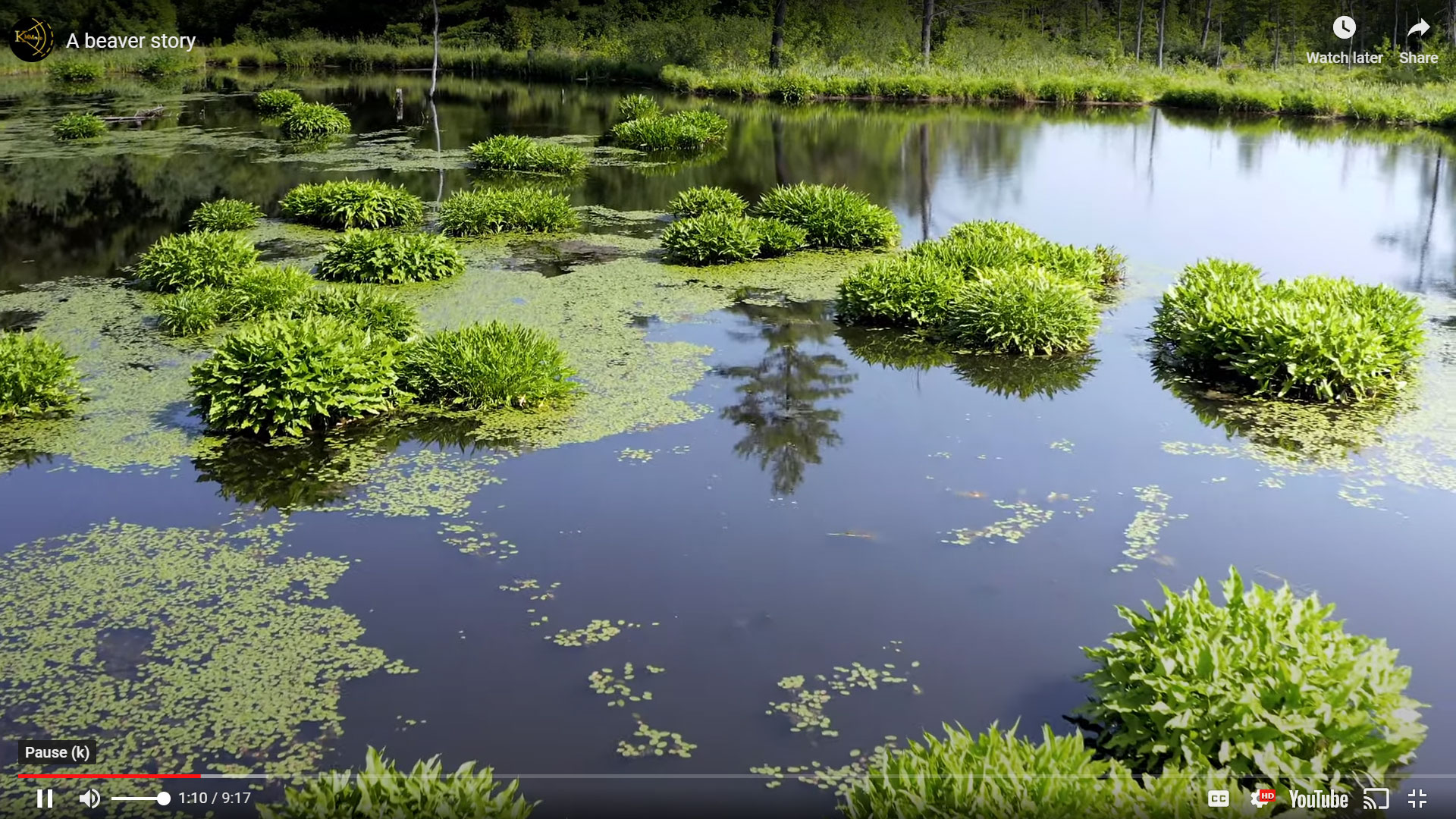This spectacular video by Kevin Major, owner of France-based KMM Productions, captures the beauty of beavers and the gorgeous, fascinating, and incredibly valuable habitats that they create, maintain, and improve.
The location of beaver damming habitat is determined by physics and occupies a very small part of the landscape. Defined as low-gradient areas on small streams, it’s an “economy zone” where damming effort is justified by the creation of sufficiently large habitats and where those hard-to-make dams are not readily destroyed by large-flow events. Both qualities also create and protect reservoirs, or escape habitat, so the beavers can better avoid being eaten. Today, as beavers recover from the Fur Trade (ca. 1600-1900) they are damming the exact same places they dammed for thousands of years prior to that event.
When beavers are not extirpated, beaver flowages largely remain rich, open, unforested marshes or wet meadows. Beaver dams are in a constant state of decay, so they don’t last long in the absence of beavers to maintain them. By eliminating beavers for hundreds of years across much of North America, the Fur Trade may have drained a million wetlands. Obviously, the loss of this critical native habitat badly hurt thousands of species. In forested regions, this historical anomaly allowed the dried-out flowages to be invaded by trees. Fortunately, beavers have been recovering for the last 75 years, gradually re-occupying and flooding their ancient haunts and drowning the woody trespassers.
The video is of the Lisle property in Grafton, Vermont USA. When Skip’s parents, Midge and Larry, bought the land in 1965 all the flowages were long gone and the beavers had not yet returned. There were no wetlands.
In 1970, the first beaver showed up and Skip built the original Beaver Deceiver on the culvert of a town road that runs through the property. Consequently, for half a century no beavers have had to be killed and the town has not had to put a penny or a minute of time into killing beavers, cleaning the culvert, or repairing the road. It is the longest continuous, non-lethal, flow-device-defense of a road culvert in the world. In addition to the millions of dollars of ecological, hydrological, and aesthetic (it’s a favorite wildlife-viewing spot for walkers, bikers, and drivers) wealth it has generated it has probably saved the town hundreds of thousands of dollars over its long tenure.
The only other option for protecting a culvert is to kill all the beavers. Therefore, the Beaver Deceiver is indirectly responsible for all the wetlands you will see in the video. The wetland area has slowly grown over the decades solely because Skip took measures that enabled live beavers to occupy the local ecosystem.
In the video, you will notice some of the subsequent habitat-improvement miracles including the building of wetland “topography.” The lines through the vegetation are beaver paths that often lead to canals: Narrow, underwater valleys carved into the uplands. What you won’t see is a huge, un-diverse monoculture of cattails that used to be there, but which the beavers broke-up and essentially ate. Like canals, beaver dredging around lodges and in front of dams appears as dark, unvegetated areas and creates a diversity of water depths within the wetland.
The mountains, or beaver lodges, are the only islands in the wetlands and are used by many species including nesting Canada geese. The beaver dams are mini eskers of rich, woody soil, and a variety of plant, animal, and insect life. Beaver topography makes for a richer, more diverse habitat, more lifeforms, and a greater diversity of lifeform types.
Looking directly down on the wetland you will see a green mat created by a floating-leaf plant called water shield. It is the primary food source for the beavers throughout summer. The round, green circles are clumps of arrowhead. The silver “splashes” are the wonderful dead trees, or bird perches, which are gifts from the Fur Trade.
Now enjoy the video and see one of the most amazing and dynamic animals, and habitat types, on Earth!

